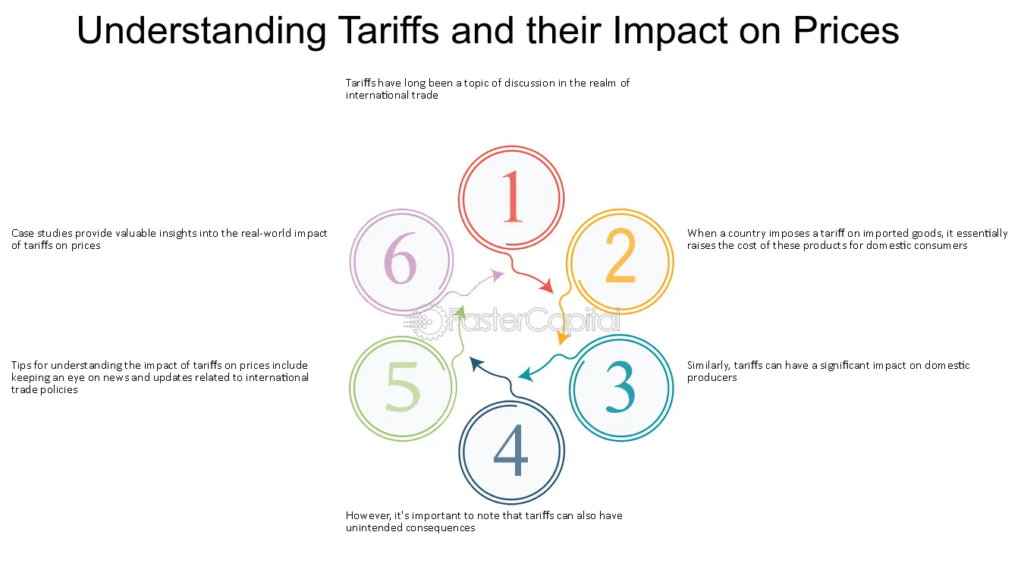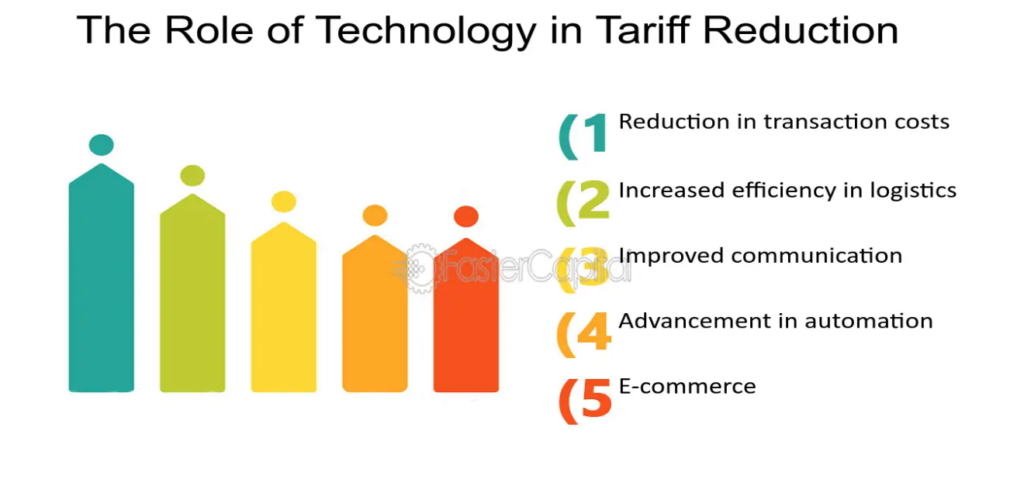The imposition of tariffs by various countries has reverberated across industries, and the shipping container transportation sector is no exception. These trade policies have disrupted global supply chains, altered shipping routes, and impacted the availability and pricing of shipping containers. As a result, businesses that rely on container transportation have faced challenges in managing costs and ensuring efficient logistics.


Source: Umpqua Bank
In this article, we will delve into the effects of tariffs on the shipping container industry, analyze key statistics and data, and explore strategies for businesses to navigate these challenges.
Understanding Tariffs and Their Impact


Tariffs are taxes levied on imported goods by a country’s government with the intention of safeguarding domestic industries and promoting local production. While they aim to protect domestic interests, tariffs can lead to unintended consequences. The shipping container industry has experienced these effects firsthand, as tariffs have caused changes in container supply and demand, ultimately affecting businesses reliant on them for transportation of goods.
According to the World Trade Organization (WTO), the average applied tariff rate worldwide stood at 10.5% for all products in 2019. However, this figure varies significantly across countries and sectors. For instance, the United States, one of the largest players in global trade, implemented several tariff measures, particularly targeting China. The U.S.-China trade war, which began in 2018, resulted in tariffs being imposed on billions of dollars’ worth of goods.
Effects on Shipping Container Costs
Tariffs have had a profound impact on shipping container costs. With increased tariffs on imported goods, shipping container companies have had to adjust their pricing structures to account for higher expenses. Consequently, businesses relying on container transportation have faced elevated costs for shipping their goods. This cost burden has often been passed on to consumers, resulting in higher prices for imported products.
Moreover, tariffs have disrupted global supply chains, leading to imbalances in container availability across different regions. Some areas experience shortages, while others have an excess supply. This disarray necessitates careful container procurement and transportation planning to mitigate the financial consequences of tariffs on businesses.


Data from the United Nations Conference on Trade and Development (UNCTAD) indicates that global maritime trade volumes declined by 3.5% in 2020, partly due to the disruptions caused by tariffs. This decline, coupled with increased costs, poses significant challenges for businesses reliant on shipping container transportation.
Changes in Shipping Routes and Supply Chains
Tariffs have resulted in significant disruptions in global supply chains, compelling shipping companies to make changes to their shipping routes. In an attempt to avoid tariffs, some companies have rerouted vessels, leading to longer transit times and increased costs. The reconfiguration of shipping routes has introduced complexities and uncertainties for businesses, demanding adaptability and proactive planning.
Furthermore, the shortage of shipping containers in certain regions has created delays and higher prices for businesses dependent on container transportation. To mitigate these challenges, businesses need to explore alternative shipping routes and modes of transportation while remaining vigilant about changes in global trade policies.
The Role of Technology in Mitigating Tariff Impacts
Technology has played a vital role in helping businesses navigate the challenges arising from tariffs on shipping container transportation. Digital platforms that facilitate real-time tracking, visibility, and connectivity between shippers and carriers have become increasingly popular. These platforms enable businesses to locate available containers and carriers swiftly, monitor shipments in real-time, and optimize logistics.


Moreover, emerging technologies such as blockchain and artificial intelligence (AI) hold promise for enhancing supply chain efficiency and reducing costs. Blockchain technology can provide transparent and secure tracking of container movements, while AI-powered analytics can optimize container utilization and predict demand patterns. By embracing technological advancements, businesses can gain a competitive edge and effectively manage the impacts of tariffs on shipping container transportation.
Strategies for Navigating Tariff-Related Challenges
To successfully navigate the challenges brought about by tariffs on shipping container transportation, businesses can adopt several strategies:
- Diversify supply chains: Businesses can reduce their vulnerability to tariffs by diversifying their supply chains. By identifying alternative suppliers from different regions, businesses can mitigate disruptions caused by tariffs and ensure a stable flow of goods.
- Negotiate with suppliers and carriers: Maintaining open lines of communication with suppliers and carriers is crucial. Negotiating pricing agreements and exploring flexible terms can help offset the increased costs associated with tariffs. Collaborative relationships with suppliers and carriers may also enable businesses to find creative solutions to logistics challenges.
- Explore alternative transportation modes: In response to disruptions in shipping container transportation, businesses can explore alternative modes of transportation, such as air freight or rail transport. Although these options may come with their own cost considerations, they can provide expedited shipping and offer flexibility in navigating tariff-related challenges.
- Stay informed and proactive: Businesses must stay abreast of changes in trade policies and regulations to effectively respond to tariff-related challenges. Regularly monitoring developments in the global trade landscape and seeking expert advice can help businesses adapt their strategies and make informed decisions.
Conclusion
Tariffs have had a profound impact on shipping container transportation, affecting businesses and the global economy as a whole. The increased costs of shipping containers, disruptions in global supply chains, and changes in shipping routes necessitate proactive measures from businesses. By diversifying supply chains, negotiating with suppliers and carriers, exploring alternative transportation modes, and leveraging technology, businesses can mitigate the negative impacts of tariffs and maintain competitiveness in the evolving trade environment.
As policymakers consider the effects of tariffs on shipping container transportation, it is essential to balance the protection of domestic industries with the promotion of global trade. Striking the right balance will help mitigate disruptions and ensure the efficient movement of goods, benefiting businesses, consumers, and the global economy in the long run.
Key Takeaways:
1. Tariffs have disrupted the shipping container transportation sector, causing changes in container supply and demand, and impacting businesses relying on container transportation.
2. Increased tariffs have led to higher shipping container costs, which are often passed on to consumers, resulting in higher prices for imported products.
3. Tariffs have caused imbalances in container availability globally, leading to shortages in some regions and excess supply in others, requiring careful container procurement and transportation planning.
4. Global maritime trade volumes declined by 3.5% in 2020 due to disruptions caused by tariffs, posing challenges for businesses reliant on shipping container transportation.
5. Tariffs have prompted changes in shipping routes as companies seek to avoid them, resulting in longer transit times and increased costs.
6. Technology, such as digital platforms for tracking and visibility, blockchain for transparent container tracking, and AI for optimizing logistics, can help mitigate the impacts of tariffs on shipping container transportation.
7. Strategies for navigating tariff-related challenges include diversifying supply chains, negotiating with suppliers and carriers, exploring alternative transportation modes, and staying informed and proactive about changes in trade policies.
8. Balancing the protection of domestic industries with the promotion of global trade is crucial for mitigating disruptions and ensuring efficient movement of goods in the long run.
Visist our Blog for more ligistics insights, tips and news


